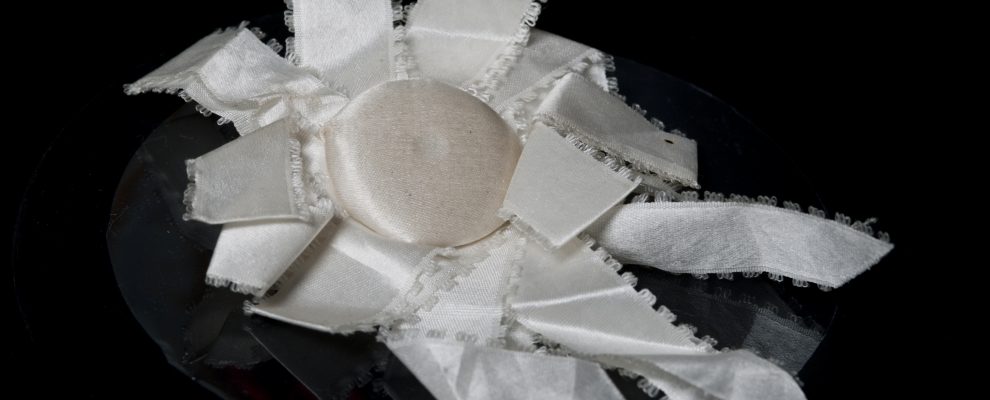The foe I’ll face, nor be the least afraid
But cut, slash, and plunder for the white cockade.
The White Cockade – A New Song, April 1794
The White Rose is perhaps the most evocative and powerful of Jacobite symbols, a significance it retains even today. Wearing the White Rose or displaying it on personal possessions signified complete dedication to the Stuart cause, even unto death. For Catholic followers of Jacobitism the rose also possessed an intense religious importance as an emblem of the Virgin Mary. As a symbol associated with royalty the rose has a long history in both England and Scotland, where it is recorded as a Stuart royal symbol from the fifteenth century. White, meanwhile, is the colour of purity and, importantly for the Jacobites, of legitimacy.
The rose as used by the Jacobites often incorporates subtle changes that distinguish it from symbolic or decorative roses seen in other contexts. The Jacobite rose is sometimes shown with eight petals rather than the five displayed by the conventional heraldic rose. It has been suggested that the petals represent the eight monarchs of the Stuart dynasty who (according to Jacobite legitimists) ruled Great Britain from James I (1603-1625) to Henry IX (1788-1807), but as images of the eight-petalled rose can be found dating from earlier than 1788 this cannot invariably be the case. Where rosebuds are shown in company with an open rose, as in the decoration of many Jacobite glasses, they may express continuing hope for the Stuart line by symbolizing James III’s sons, Charles and Henry.
Prince Charles Edward Stuart played a part in establishing another Jacobite symbol. Following his stay at Fassfern in 1745 he reportedly took a white rose from the tree outside for his bonnet as he left. This rose was transformed into another equally potent symbol: the White Cockade. The cockade, a large rosette of fabric, was worn in the cap as a sign of allegiance to a political cause, and formed part of many military uniforms. A white cockade became widely known as a symbol of Jacobite allegiance, and it became an increasingly dangerous item to wear. Eventually wearing the cockade could be grounds for imprisonment and even execution.

Source: In the Name of the Rose: The Jacobite Rebellions, Symbolism and Allegiance (Fairfax House, 2013)
